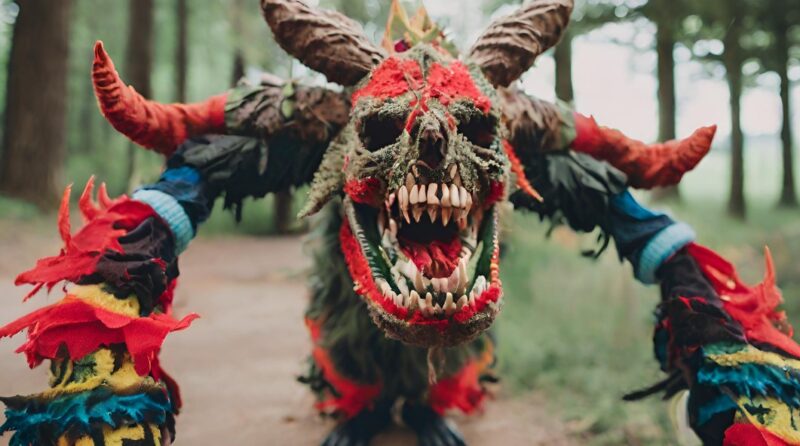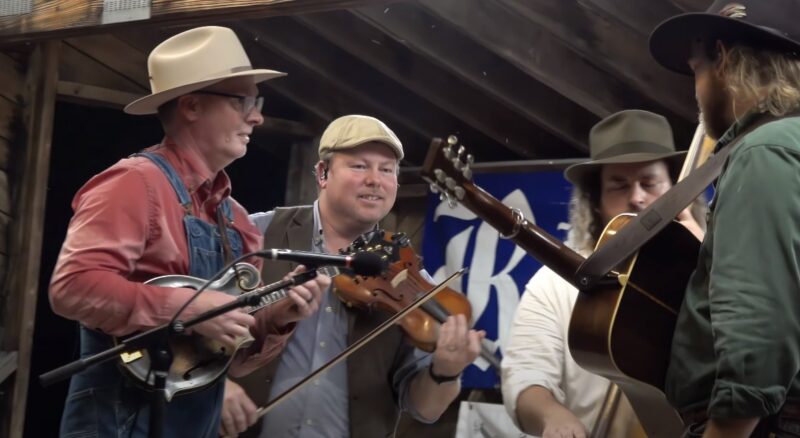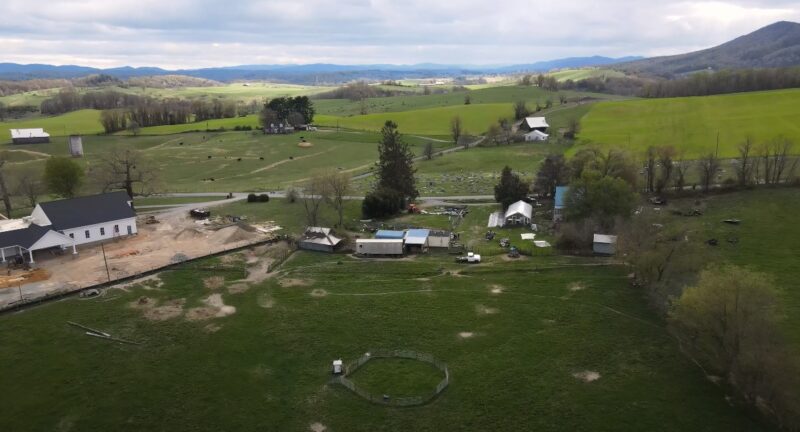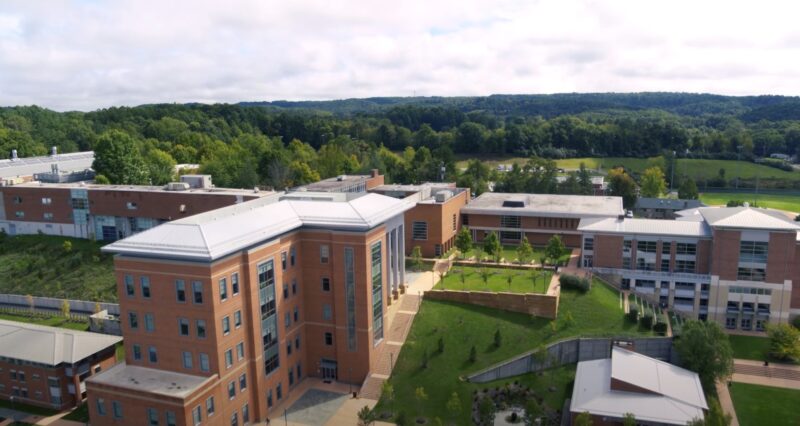Appalachia, a region spanning 13 states and covering 205,000 square miles, is a melting pot of cultures, histories, and traditions. With a diverse population of 25 million people, it boasts a rich cultural heritage that dates back to the 1700s, when European immigrants began settling in America.
Historical Roots
The history of Appalachia is as complex and diverse as the mountains themselves. Stretching across the eastern United States, this region’s cultural roots are deeply intertwined with the histories of various groups who have called it home.
From the early native inhabitants to the influx of European settlers and enslaved Africans, each group has left an indelible mark on Appalachian culture.
European Influence
The Scotch-Irish and German immigrants played a pivotal role in shaping the culture of Appalachia. They brought with them a strong sense of independence and self-reliance, traits that were necessary for survival in the often harsh and unforgiving Appalachian landscape.
Their traditions, such as folk music, dance, and storytelling, would become deeply embedded in the culture. The Scotch-Irish, in particular, were known for their skills in farming and whiskey-making, both of which became important aspects of the region’s economy and culture.
The Germans contributed with their expertise in woodworking, craftsmanship, and their rich culinary traditions, including foods like sauerkraut and various sausages, which became part of the culinary landscape.
Cultural Synthesis
The interaction between European settlers and Native Americans led to a unique cultural synthesis. This fusion can be seen in various aspects of Appalachian culture, such as music, where instruments like the banjo, of African origin, were combined with European styles to create a unique sound that would become a hallmark of Appalachian music.
Craftsmanship, particularly woodworking and quilting, also reflects this cultural melding. Quilting, for instance, became a common practice in Appalachian households, combining European stitching techniques with Native American patterns and designs.
This blend of artistic styles created a distinctive aesthetic that is still celebrated in Appalachian arts and crafts today.
Native American Presence

The Cherokee and other Native American tribes have a long history in the Appalachian region, dating back over 16,000 years. Their deep connection to the land influenced their customs, beliefs, and practices, many of which have become interwoven with the broader Appalachian culture.
Native American influences are particularly evident in the respect for nature that characterizes Appalachian culture. Their knowledge of herbal medicine, hunting, and agriculture played a significant role in shaping the lifestyle and survival strategies of all Appalachians.
The oral storytelling tradition of the Cherokee, rich with tales of the natural world and the human experience, has also been a significant contribution to the cultural fabric of Appalachia. The Etowah Indian Mounds are another cultural treasure related to natives.
The arrival of enslaved Africans in the 16th century added another layer to the cultural tapestry of Appalachia. Despite the brutal conditions of slavery, African Americans contributed immensely to the development and culture of the region.
Their influence is most prominently seen in music and food. The introduction of the banjo, an instrument with African origins, and the development of spirituals and gospel music had a lasting impact on Appalachian music.
In cuisine, African American contributions include the introduction of various cooking techniques and ingredients, such as okra and black-eyed peas, which became staples in Appalachian cooking.
Traditions and Practices

Appalachian culture is a vivid tapestry of traditions, ranging from arts and crafts to storytelling and music.
Arts and Crafts
Appalachian crafts are more than just items of utility; they are expressions of culture and identity. They embody the values of the region: resourcefulness, beauty, and a deep connection to the land. Artisans today not only preserve these traditional crafts but also innovate, ensuring that this important aspect of Appalachian culture continues to thrive.
- Functional Origins: Traditional Appalachian arts and crafts, such as quilting and woodworking, originated out of necessity and have been preserved over generations.
- Cultural Preservation: These crafts not only serve as a means of expression but also as a way to preserve the region’s history and traditions.
Food Culture
- Staple Foods: Corn, apples, and homegrown vegetables play a central role in Appalachian cuisine, reflecting the region’s agricultural heritage.
- Culinary Diversity: The food culture in Appalachia is a blend of various cultural influences, creating a unique culinary tradition.
Festivals
Each festival in Appalachia is a unique blend of music, cuisine, and artisanal crafts. From bluegrass music festivals to apple harvest celebrations, these gatherings highlight the diverse influences that shape the region’s cultural landscape.
Myths and Folklore

Appalachian folklore is a rich amalgam of Christian, European, and Native American influences, reflecting the region’s diverse history.
Christian and European Influence
- Religious Narratives: Christian beliefs interwoven with European folklore have resulted in unique Appalachian myths and legends.
- European Legacy: Tales from European settlers have become an integral part of the region’s folklore.
Native American Stories
- Indigenous Narratives: Native American stories and legends have been passed down through generations, adding depth to the region’s folklore.
- Cultural Fusion: The blending of these narratives with European and African tales created a distinctive storytelling tradition.
Music and Dance

Music and dance are central to Appalachian culture, with influences from various cultural groups.
Appalachian Music: A Melodic Mosaic
Music focuses on the region’s diverse history. It’s a blend of various influences, including European, African, and Native American traditions. Appalachian music, known for genres like bluegrass, country, and folk, tells the stories of the people, their joys, struggles, and everyday life.
The lyrics and melodies of Appalachian songs often reflect the daily experiences and emotions of the region’s people. Themes of love, hardship, work, and faith are common, offering a glimpse into the life in the mountains. Music gatherings, whether in homes or at festivals, are central to Appalachian culture, providing a sense of unity and shared identity.
- Bluegrass and Folk: These genres, known for their distinctive sound, have roots in Appalachian culture, blending various cultural influences.
- Musical Heritage: The region’s music reflects its history, telling stories of the people and their experiences.
Dance Forms: Expressions of Joy and Community
- Traditional Dances: Clogging, flatfoot dancing, and square dancing are popular in Appalachia, reflecting the region’s communal spirit.
- Cultural Significance: These dance forms are not just entertainment but also a way to celebrate and preserve Appalachian traditions.
Stereotypes and Poverty

Stereotypes about Appalachia and its people have been perpetuated for decades, painting a picture that is often one-dimensional and inaccurate. These stereotypes typically revolve around ideas of poverty, lack of education, and a resistance to modernization.
- Poverty and Economic Struggle: Appalachia is often portrayed as a region mired in poverty, with images of dilapidated homes and unemployed individuals. While economic hardship is a reality for some, this narrative overlooks the diversity of experiences and the resilience of many communities.
- Lack of Education: There’s a prevailing stereotype that Appalachian people lack formal education and are resistant to new ideas. In reality, the region has produced scholars, artists, and professionals who have contributed significantly to various fields.
- Resistance to Change: The portrayal of Appalachians as people who are resistant to change and modernization is another common stereotype. This overlooks the region’s history of adapting to and embracing change, whether it be in technology, industry, or cultural practices.
Challenging Misconceptions
Efforts to challenge and change these stereotypes have been ongoing, with individuals from the region and beyond working to present a more accurate picture of Appalachian life.
- Counter-Narratives in Literature: Appalachian authors and storytellers have played a crucial role in presenting a more nuanced and complex view of the region. Their works often explore the richness of Appalachian culture, its history, and the varied experiences of its people.
- Documentaries and Films: In recent years, documentaries and films have been produced that offer a more balanced and in-depth look at life in Appalachia, moving beyond stereotypes to tell stories of resilience, community, and cultural richness.
Regional Commission
- Establishment in the 1960s: The Appalachian Regional Commission was created to address poverty in the region.
- Ongoing Efforts: The commission continues to work towards economic development and improving the quality of life in Appalachia.
Culture and Education

Education in Appalachia has played a crucial role in both preserving and transforming the region’s cultural heritage.
Initiatives in Cultural Preservation
- Incorporating Culture into Curriculum: Schools and colleges in Appalachia have started integrating local culture, history, and arts into their curriculum.
- Fostering Cultural Pride: These educational initiatives aim to instill a sense of pride in students about their Appalachian heritage.
Challenges in Appalachian Education
- Addressing Educational Disparities: The region faces challenges in terms of educational resources and opportunities.
- Efforts Towards Improvement: There is a growing focus on improving educational infrastructure and access, vital for the region’s future development.
FAQs
What are some Appalachian traditions?
Music, storytelling, dance, crafts, and food are all part of Appalachia’s rich cultural heritage. Music often uses stringed instruments like banjos and fiddles, while stories are passed down through generations.
Why is Appalachia so important?
Appalachia is a special place because of its rich culture, natural beauty, and unique history. People who are proud of their heritage and traditions make up the diverse population of Appalachia.
What language do Appalachians speak?
English is spoken by almost all Appalachians. However, Gaelic and Cherokee are spoken by a small number of people. In the past, a distinctive dialect of English known as Appalachian English was spoken there. This dialect is still spoken by some people, but it is becoming increasingly uncommon.
What are the three rules of Appalachia?
There aren’t three universally agreed-upon rules in Appalachia. However, there are several values and principles that many Appalachian people hold dear. These include self-reliance, community, and respect for the land.
What are 3 important features of Appalachian?
The Appalachian Mountains, forests, and rivers are all important parts of the region. The mountains offer stunning views and recreation opportunities, while the forests provide habitat for plants and animals and contribute to the region’s economy.
Last Words
Appalachia’s story is a vibrant narrative of resilience, diversity, and cultural richness. This region, with its deep historical roots and diverse influences, presents a unique aspect of American identity, one that is intricately woven into the fabric of the nation’s history.

